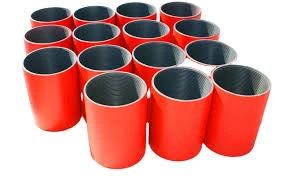- Afrikaans
- Albanian
- Amharic
- Arabic
- Armenian
- Azerbaijani
- Basque
- Belarusian
- Bengali
- Bosnian
- Bulgarian
- Catalan
- Cebuano
- Corsican
- Croatian
- Czech
- Danish
- Dutch
- English
- Esperanto
- Estonian
- Finnish
- French
- Frisian
- Galician
- Georgian
- German
- Greek
- Gujarati
- Haitian Creole
- hausa
- hawaiian
- Hebrew
- Hindi
- Miao
- Hungarian
- Icelandic
- igbo
- Indonesian
- irish
- Italian
- Japanese
- Javanese
- Kannada
- kazakh
- Khmer
- Rwandese
- Korean
- Kurdish
- Kyrgyz
- Lao
- Latin
- Latvian
- Lithuanian
- Luxembourgish
- Macedonian
- Malgashi
- Malay
- Malayalam
- Maltese
- Maori
- Marathi
- Mongolian
- Myanmar
- Nepali
- Norwegian
- Norwegian
- Occitan
- Pashto
- Persian
- Polish
- Portuguese
- Punjabi
- Romanian
- Russian
- Samoan
- Scottish Gaelic
- Serbian
- Sesotho
- Shona
- Sindhi
- Sinhala
- Slovak
- Slovenian
- Somali
- Spanish
- Sundanese
- Swahili
- Swedish
- Tagalog
- Tajik
- Tamil
- Tatar
- Telugu
- Thai
- Turkish
- Turkmen
- Ukrainian
- Urdu
- Uighur
- Uzbek
- Vietnamese
- Welsh
- Bantu
- Yiddish
- Yoruba
- Zulu
Understanding Casing Pup Joints in Oil and Gas Drilling Applications
Understanding Casing Pup Joints A Key Component in Oil and Gas Operations
In the oil and gas industry, the extraction and management of hydrocarbons involve numerous components designed to ensure efficiency and safety. One such crucial component is the casing pup joint. This article delves into the significance, specifications, and applications of casing pup joints in drilling operations.
What is a Casing Pup Joint?
A casing pup joint is a short length of pipe that is used in the construction of a casing string. Casing strings are crucial in well construction as they provide structural integrity to the wellbore and isolate the different formations encountered during the drilling process. Casing pup joints are typically used to fill the gap between longer sections of casing, thereby allowing for more precise control over the well’s geometry.
Pup joints can vary significantly in length, generally ranging from 2 to 10 feet. Their relatively small size allows them to be used effectively in tight spaces and for various applications in drilling operations.
Specifications and Construction
Casing pup joints are made from materials that meet stringent industry standards, typically carbon steel or other high-strength alloys. They are designed to withstand extreme pressures and temperatures, ensuring that they can function effectively in the harsh environments often found in subsurface formations.
casing pup joint

The joints are manufactured in multiple sizes and weight specifications, accommodating the specific requirements of the well. Additionally, pup joints come with various threading options, such as API (American Petroleum Institute) threads, which ensure compatibility with other casing components.
Applications of Casing Pup Joints
One of the primary applications of casing pup joints is in the assembly of the casing string. When a standard length of casing is either too long or needs to be adjusted due to unexpected subsurface conditions, pup joints can be inserted to provide the necessary length without requiring additional lengthy sections of casing. This flexibility is vital in maintaining the integrity of the wellbore, particularly in challenging geological formations.
Casing pup joints are also used during the completion phase of a well. They can facilitate the installation of production tubing and other equipment necessary for effective hydrocarbon extraction. Their compact size makes them ideal for integrating with other components in the completion assembly.
Moreover, pup joints can play a significant role in the process of well abandonment. They can be utilized for well abandonment plugs, assisting in effectively sealing off sections of a well that are no longer in use. This function is crucial for minimizing environmental impact and ensuring safety.
Conclusion
Casing pup joints are an essential element of oil and gas drilling operations, providing flexibility, ensuring structural integrity, and aiding in the efficient management of wells. Their ability to adapt to various situations within a wellbore makes them a valuable asset in the oil and gas industry. As drilling technologies evolve and wells become increasingly complex, the significance of casing pup joints will undoubtedly continue to grow, directly influencing the efficiency and safety of hydrocarbon extraction processes. Understanding the roles and specifications of these joints helps engineers and operators design better drilling programs and enhance the overall productivity of oil and gas operations.
-
Tubing Pup Joints: Essential Components for Oil and Gas OperationsNewsJul.10,2025
-
Pup Joints: Essential Components for Reliable Drilling OperationsNewsJul.10,2025
-
Pipe Couplings: Connecting Your World EfficientlyNewsJul.10,2025
-
Mastering Oilfield Operations with Quality Tubing and CasingNewsJul.10,2025
-
High-Quality Casing Couplings for Every NeedNewsJul.10,2025
-
Boost Your Drilling Efficiency with Premium Crossover Tools & Seating NipplesNewsJul.10,2025







